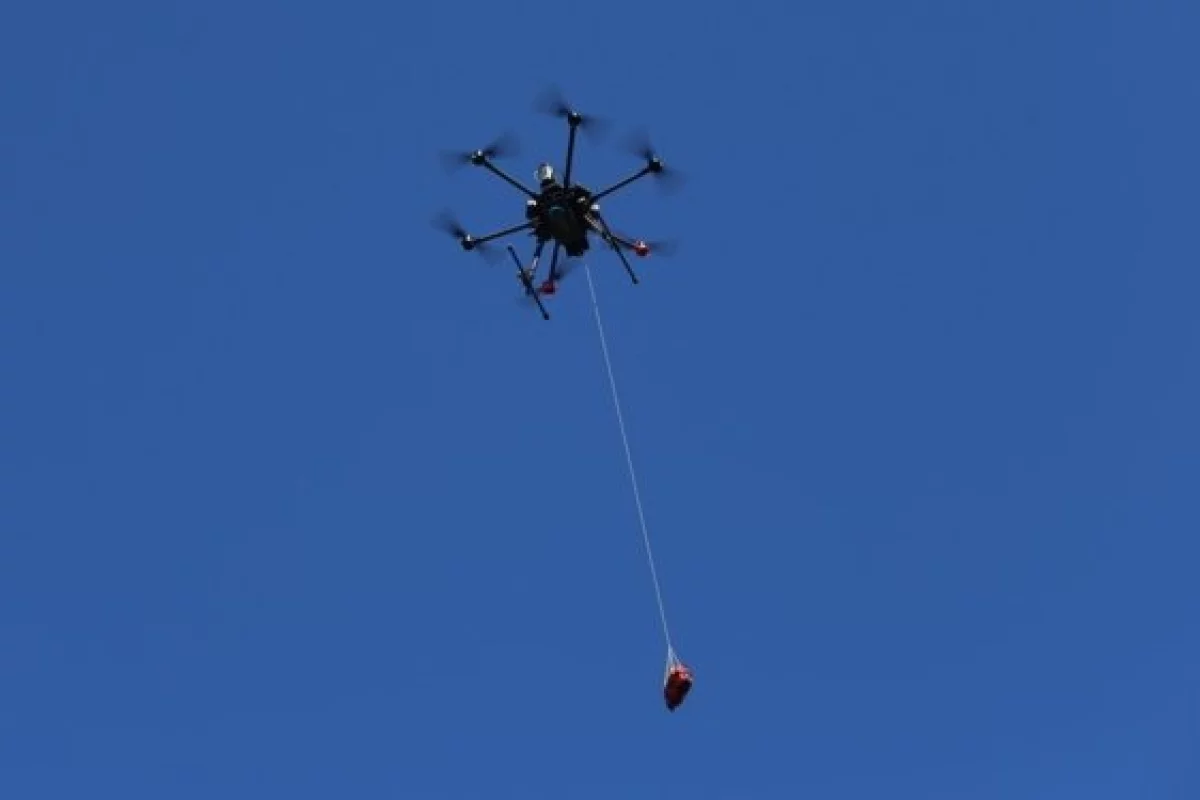Drones may prove to be a more expedient means of delivering many items, but a number of research projects have demonstrated that dropping defibrillators off to heart attack victims could have life-saving consequences. A new study from a Swedish team of researchers has now deployed this technology in real-world scenarios for the first time. On average, the unmanned aircraft arrived well ahead of ambulance crews, with the medical device safely in tow.
When a person suffers a cardiac arrest, brain death and fatality can occur within just minutes, and the chances of survival for those that experience them outside of hospital is therefore slim. Prompt treatment involving CPR and an automated external defibrillator (AED) can greatly increase the odds of survival, so every second counts in getting the equipment to the scene.
Back in 2014, we looked at a student-designed "Ambulance Drone" with an integrated webcam, that drops a defibrillator off at the scene and then allows experts to guide those on the ground through how to use it. The Defikopter is another example, while in 2017 scientists at Sweden's Karolinska Institutet carried out simulation exercises showing how these types of drones could transport defibrillators four times as quickly as an ambulance. The latest study also comes courtesy of researchers at the Karolinska Institutet, but involves real-life incidences of cardiac arrest.
”This is the first time in the world that a research group can report results from a study where drones flew defibrillators to location of real-life alerts of suspected cardiac arrest,” says lead researcher Andreas Claesson.
The pilot project involved emergency service operators, drone pilots and air traffic control, and saw drones used to dispatch defibrillators to sites of cardiac arrest across four months last year. The drones were deployed in 12 out of 53 alerts for suspected cardiac arrests, with the AED successfully arriving 11 times. The drones traveled an average of 3.1 km (2 mi), and seven times the drones arrived before the ambulance did, with a median time difference of one minute and 52 seconds. None, however, were used before the ambulance arrived.
“Even if none of the AEDs were used this time, our study shows that it is possible to use drones to transport defibrillators in a safe way and with target precision during real-life emergencies,” says first-author Sofia Schierbeck. “A precondition for their future use is that the dispatcher takes initiative and instructs people on site to quickly collect and attach the AED in order to help the person with cardiac arrest.”
There were a few limiting factors to the study, which narrowed the scope of when the drones could be deployed. The aircraft were unable to fly in the dark, rain or strong winds, and were programmed to avoid flying over densely populated areas, meaning they were unable to take on some of the deliveries. The team is working to expand the capabilities of the technology so that it can respond to more incidences of cardiac arrest, and arrive on the scene more quickly.
“Since this study was completed, we have identified several areas of improvement,” Claesson says. “In April this year, we began a follow-up study with a more optimized system. In that study, we want to test if we can use the drones in more alerts and reduce the response time further and thereby increase the time benefit as compared to the ambulance. Every minute without treatment in the early stages reduces the chance of survival by around 10 percent, and that is why we believe this new method of delivery has the potential to save lives.”
The research was published in the journal European Heart Journal.
Source: Karolinska Institutet




